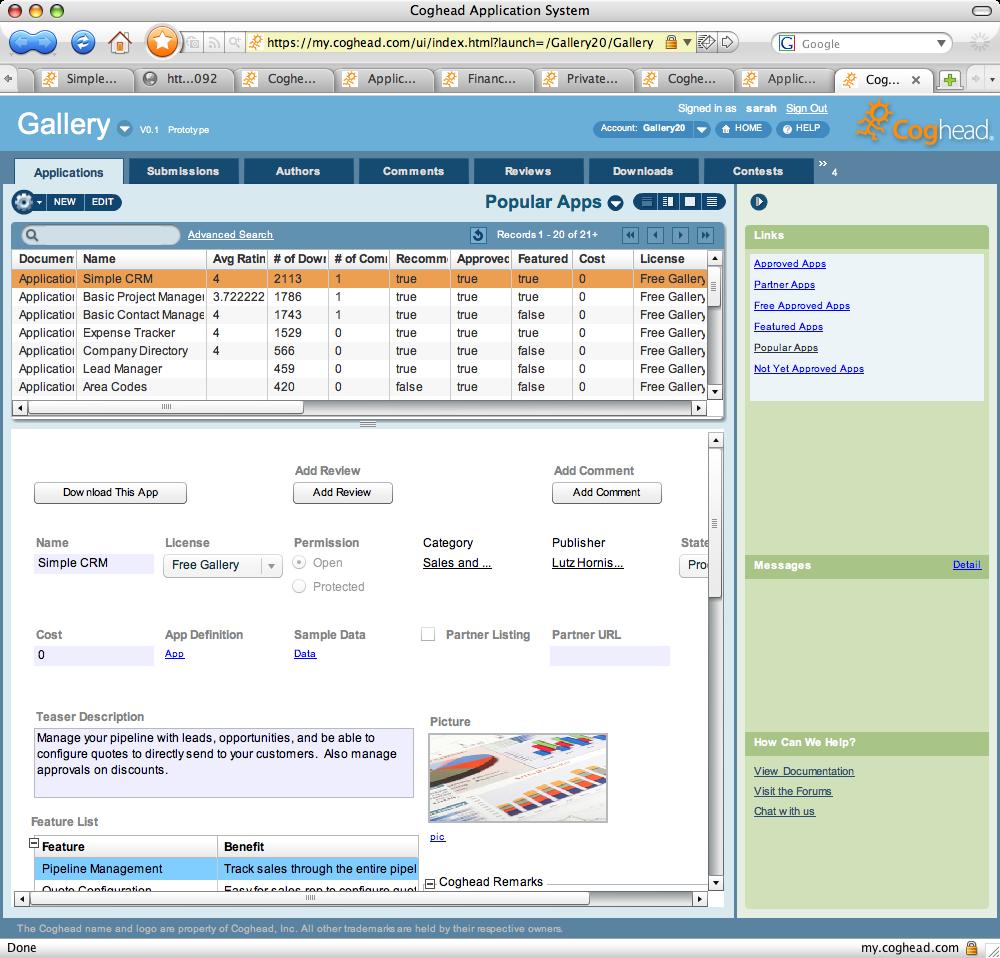Coghead Gallery signals new opportunities for developers

Paul McNamara, Coghead's CEO briefed Phil Wainewright and I the other day about today's announcement of the Coghead Gallery. While the concept of code exchange has been around for a while, to date there's not been an efficient way for the small development shop to discover code it might wish to re-use in larger applications or distribute.
McNamara claims that the smaller development shop, which he defines as 2-20 people, rarely has the capital required to establish itself as a provider of anything other than custom code. As a consequence, it is often difficult for these shops to break out and provide applications into the general market place. Coghead is endeavoring to change that with the Gallery, supported by extensive infrastructure based on Amazon web services.
While Coghead doesn't meet the full definition of platform as a service, it is going firmly in that direction with its Gallery offering. Coghead offers two models for developers to select. The first is what it calls an 'open definition' where developers offer code that others distribute, modify or use. This leans towards the open source model of computing albeit within the framework of the Coghead services platform. McNamara is keen on this model as he believes it paves the way for small shops to acquire code they can then mashup or extend to business specific applications for targeted markets.
The second model: 'protected definition' allows the development shop to protect its IP and use Coghead as the storefront through which its applications are sold. McNamara says that customers can switch between both models and is enabling that through a BSD style of license.
Since Coghead is providing the infrastructure, I was interested to learn how it plans on protecting both itself and its customers from developing rogue code along with potential Amazon outages."We architecturally constrain users to prevent out of control processes such as a recursive action that ends up spinning a lot of threads. We can detect and kill those and notify the developer. We're replicating to S3 so if there is an Amazon outage then the only impact is on the replication service,"said McNamara.
Coghead's business model is based on the assumption that as we move towards cloud computing, that applications will migrate towards being lighter in weight, with fewer features and requiring zero infrastructure. While the idea makes sense, developers will need to be laser focused on their target opportunities in order to turn this idea into a viable business.
